
Contact me Go to home page Return to main travel page
Mérida & the Yucatan
2018
*
Michael Kluckner
Contact me Go to home page Return to main travel page
Artwork & text © Michael Kluckner, 2018
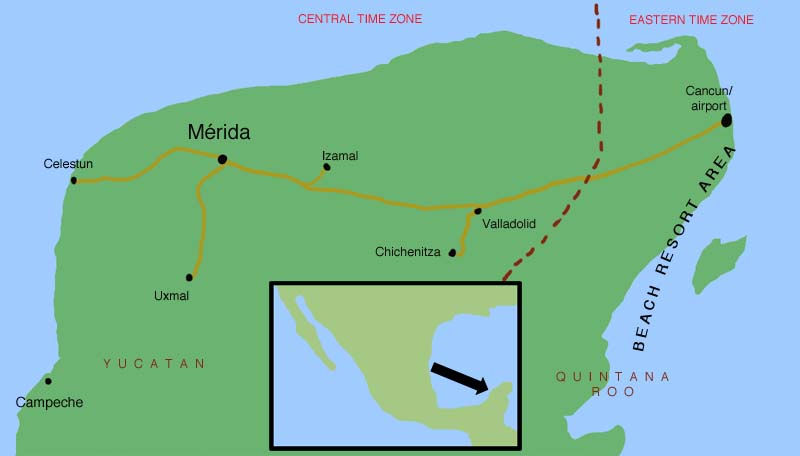
| A straightforward little trip into
Colonial Mexico in January, avoiding the beach resorts of the
Mayan Riviera on the east side of the Yucatan peninsula. We took a
nonstop red-eye Westjet flight from Vancouver to Cancun, went
immediately to the bus station and caught the next bus to
Valladolid (about 3 hours), where we stayed overnight. We used a
half day to take an Oriente-line bus out to Chichen Itza, the huge
Mayan ruin, which is impressive but rather spoiled by the
megacrowds and all the vendors who set up within the
archaeological site itself (Chichen Itza is within daytrip range
of the seaside resorts and thus gets the hordes). We then went by bus another 3+ hours to Mérida, just celebrating its 400th birthday, and checked in for a week at an airbnb casa near La Ermita de Santa Isabel, about a 15-minute walk south of the Plaza Grande in central Mérida. We hung around Mérida for part of the time and took day trips to Uxmal, Celestun, and Izamal; the one regret was not getting to Campeche, which sounded historic and attractive but would have meant leaving our Mérida house for a couple of days. Our casa's location on Calle 64A was very convenient to the bus depot at Calle 69 and Calle 70 (the odd-number streets run east-west, the even-numbered ones north-south); it was easy to stop by and look for bus departures to the various nearby towns and sites. ADO is the premium line in that part of Mexico, with Oriente in second place and a horde of smaller, cheaper companies also available. A taxi haled on the street to Centro was about 30 pesos – $1.50 or so US. We could not figure out the system of local buses and collectivos so were stuck with feet and cabs. We did rent a Fiat from Easy Way Rent a Car, on Calle 60 a few blocks north of Plaza Grande, to go to Celestun. They were efficient and honest to deal with; it cost about $40 Canadian for the day, which was reasonable, but the in-and-out currency exchange on the credit-card deposit added another $23 to the cost! Not the car rental company's fault, just the bank's. Otherwise, it's pretty much a cash economy in the milieu where we were travelling. One thing to note: if you have to get back to Cancun airport, bear in mind that you lose an hour when you cross the border into Quintana Roo – for some bizarre reason they put a time-zone line midway across the peninsula at the state border. There's really no "landscape" to draw – the peninsula is flat and featureless, with no rivers or lakes and an even covering of scrappy forest with few visible farms or clearings. It's hardly jungle or tropical at all and is one of the few places where looking out the bus window actually becomes boring. However, the towns and people are excellent subject matter. The drawings below are in my constant-companion Moleskine sketchbook, 8 1/4 x 5 1/4 inches, in BIC mechanical HB pencil with some added tones using Staedler coloured pencils (which didn't work out very well for anything at all, IMHO). |
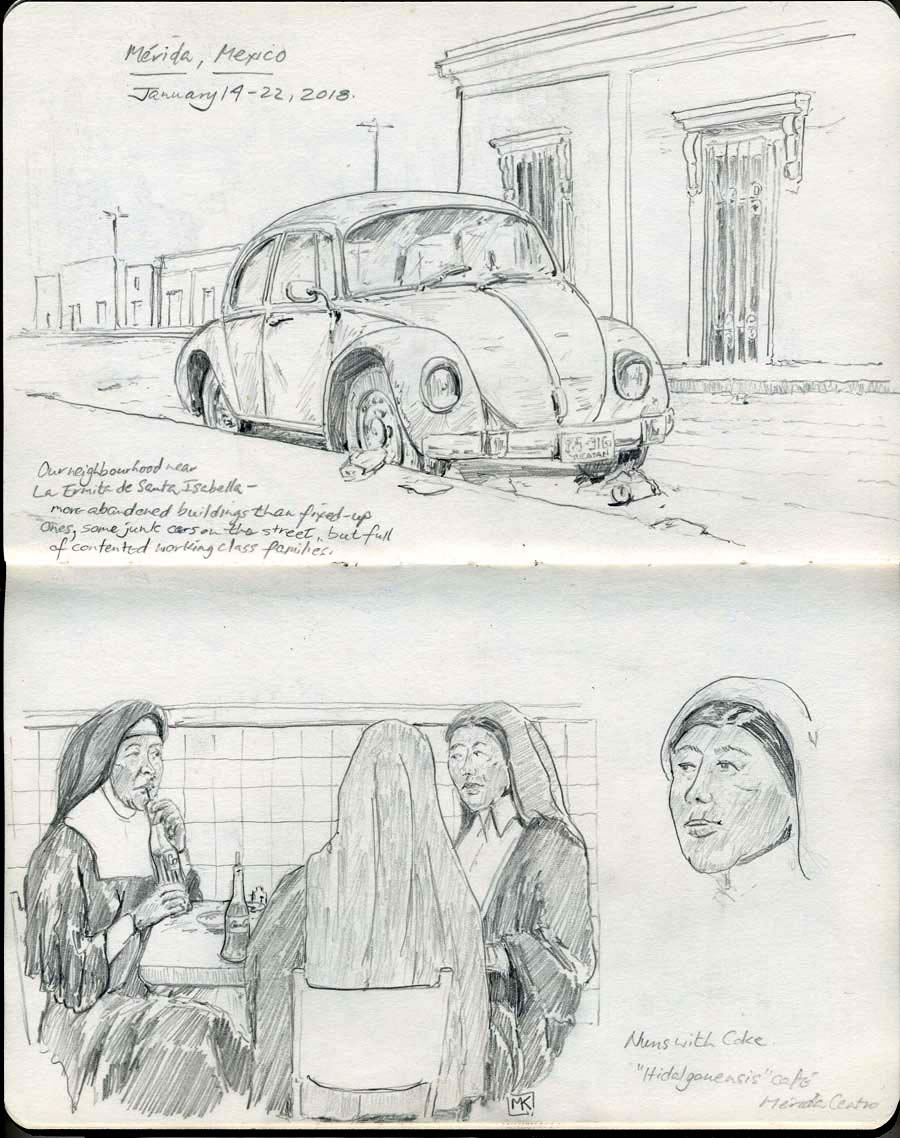
Our neighbourhood was quite working-class and one of the last places on the planet to see Beetles in their natural habitat (Brazil and Mexico continued to make them years after Germany had moved on).
There was a bakery – Expendio de Pan –at the end of the block on the Ermita square and a few tiendas (small shops) on nearby streets.
Some of the houses were painted in pastel colours; most were dusty white with bright trim.
Everybody drinks Coke – the red colour of its logo is everywhere on tables, chairs, vending machines and delivery trucks.
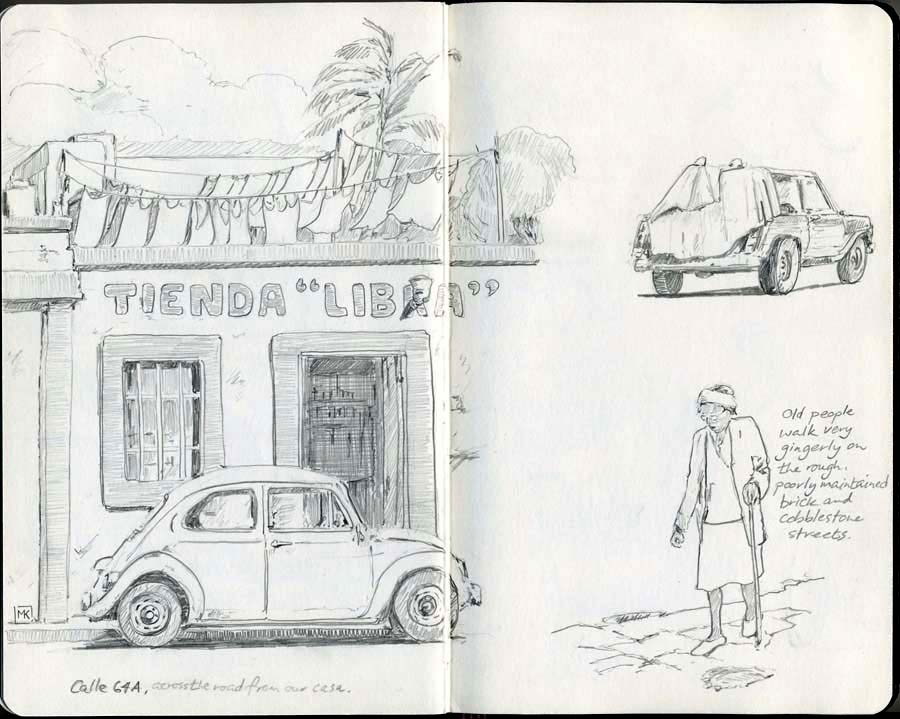
Laundry is pegged out on the flat roofs. Streets are cobblestone or brick, sidewalks are usually paved but often badly broken up. Tough for old people to get around.
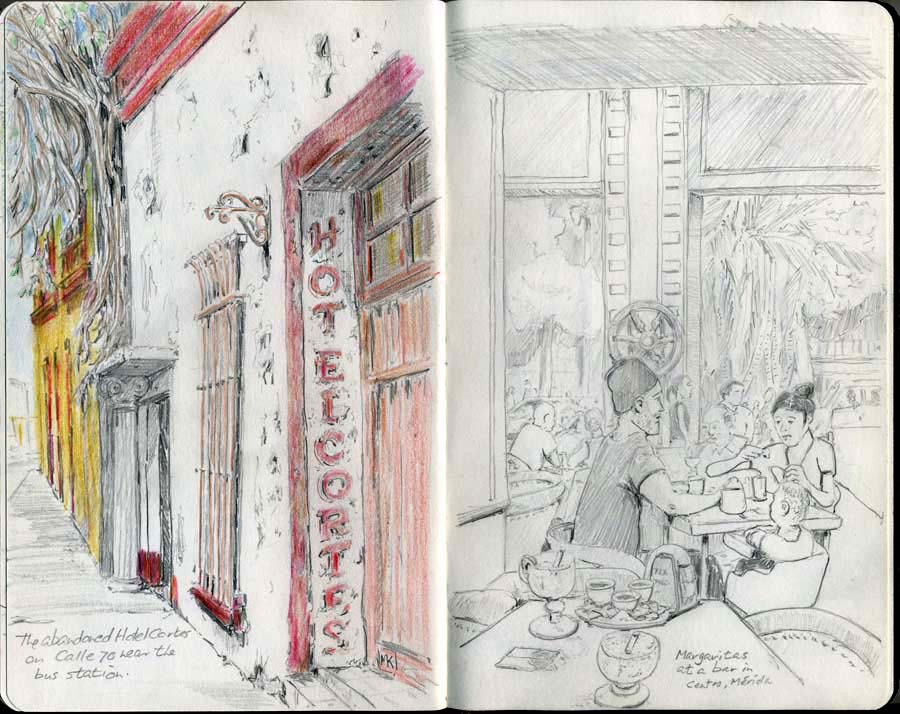
Margaritas cost about 65 pesos – about $4 Canadian. Cafés and tavernas were great, mostly open to the street, with good service and cheap prices.
I became fascinated by the abandoned pair of hotels on Calle 68 south of the bus depot (I wrote the wrong street name in the drawing!): the Hotels Cortes and Alamo, with their beautiful peeling paint.
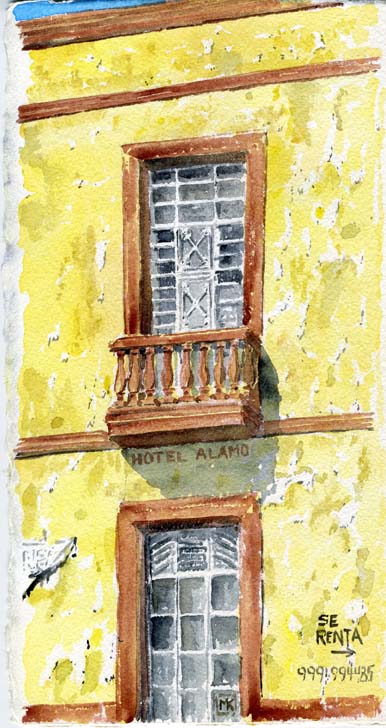
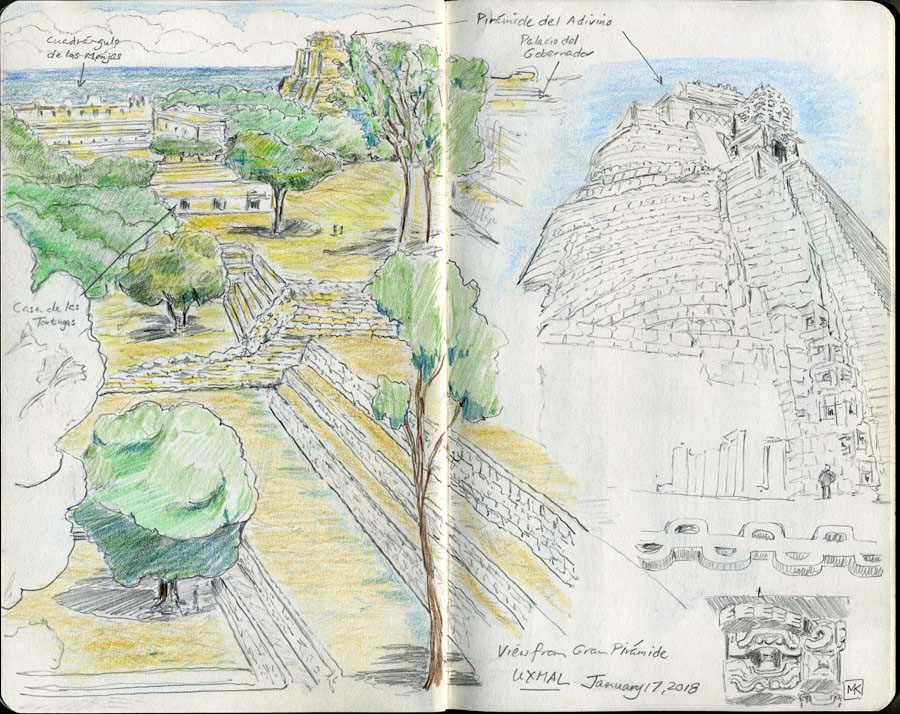
Excellent daytrip to Uxmal – almost empty compared with Chichen Itza and free of touts and vendors. See the photos below of climbing the Gran Pirámide.
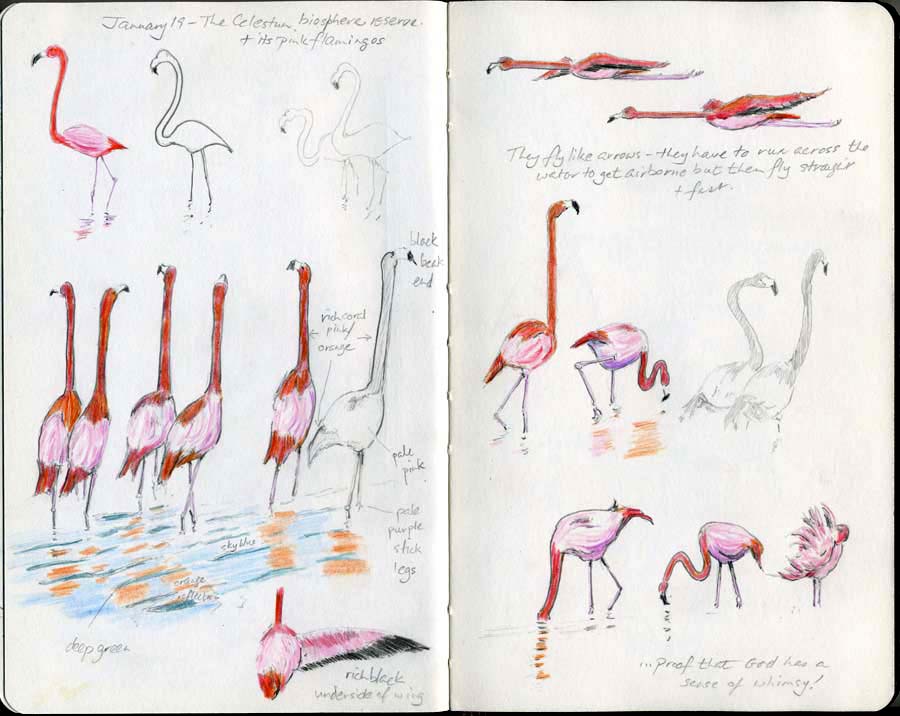
Unforgettable daytrip to the fantastic estuary at the Celestun biosphere reserve with its hordes of pink (actually coral-coloured) flamingos.
You rent a boat that seats 6 people (and try to hook up with other travellers as we did with a family from Chihuahua to share the cost) and head miles out into the estuary.
The operator cuts the outboard motor and you drift to within metres of the flocks. They are so beautiful and elegant but honk like a barnyard of goose-pig hybrids.
It proves that God has a sense of whimsy!
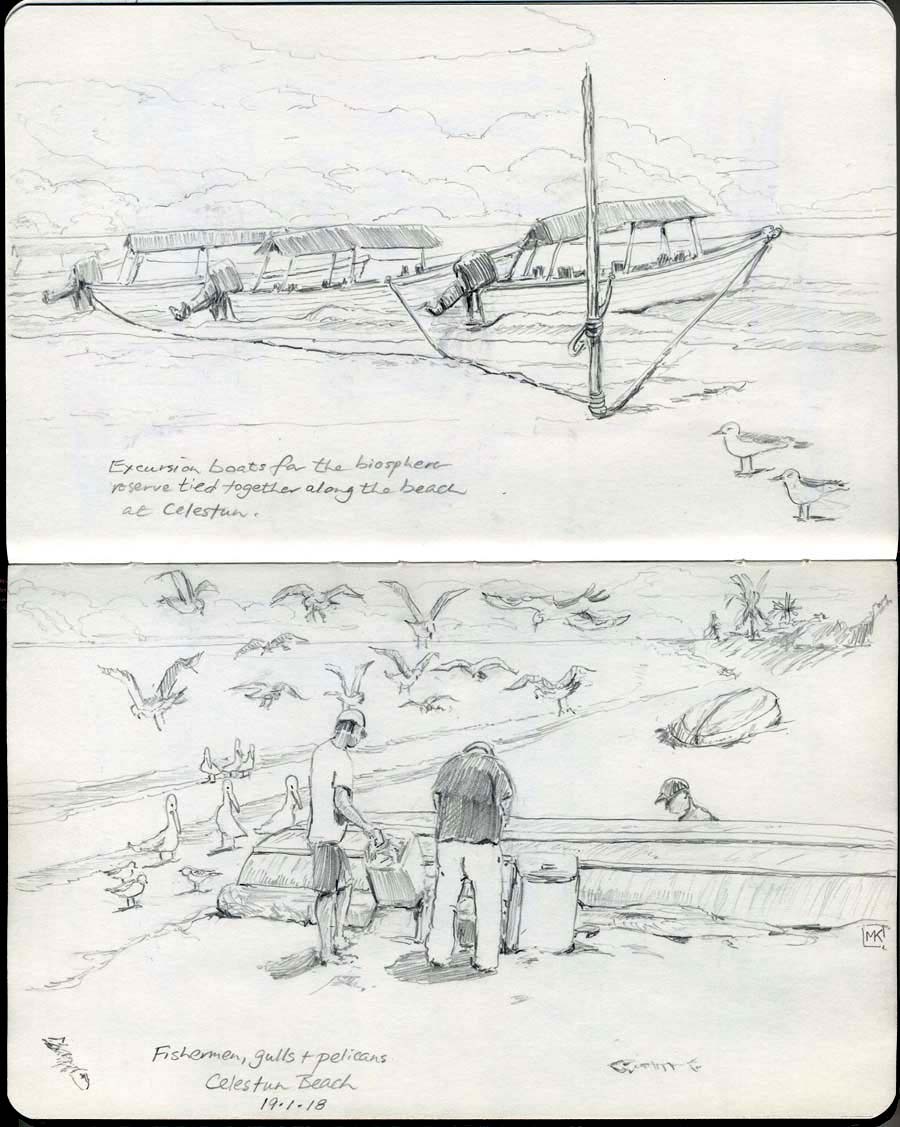
Celestun was our beach day, mainly observing the birds and the fishermen as the water didn't look terribly inviting.
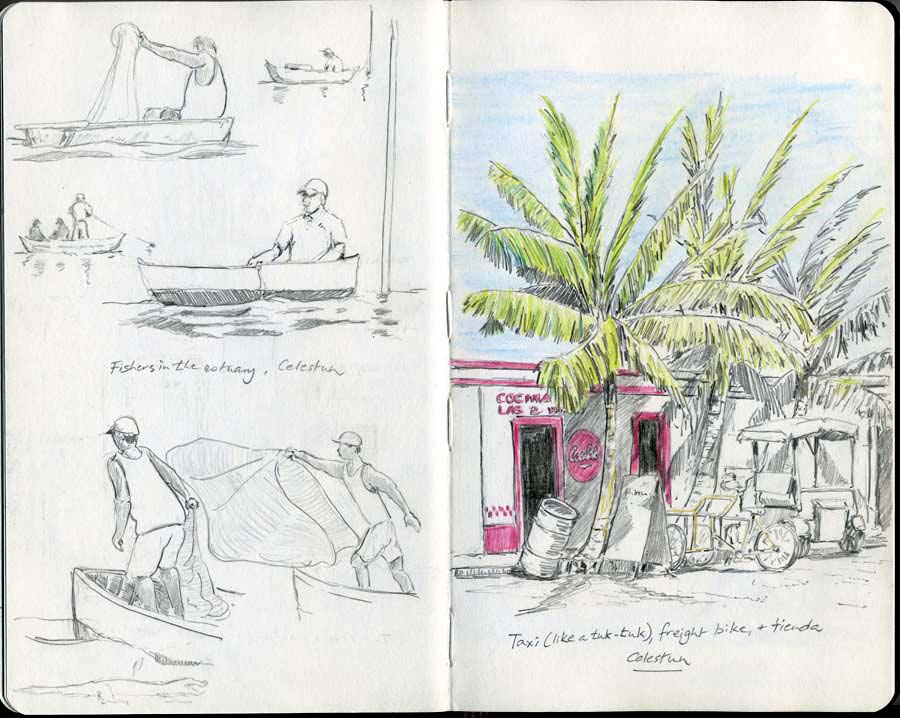
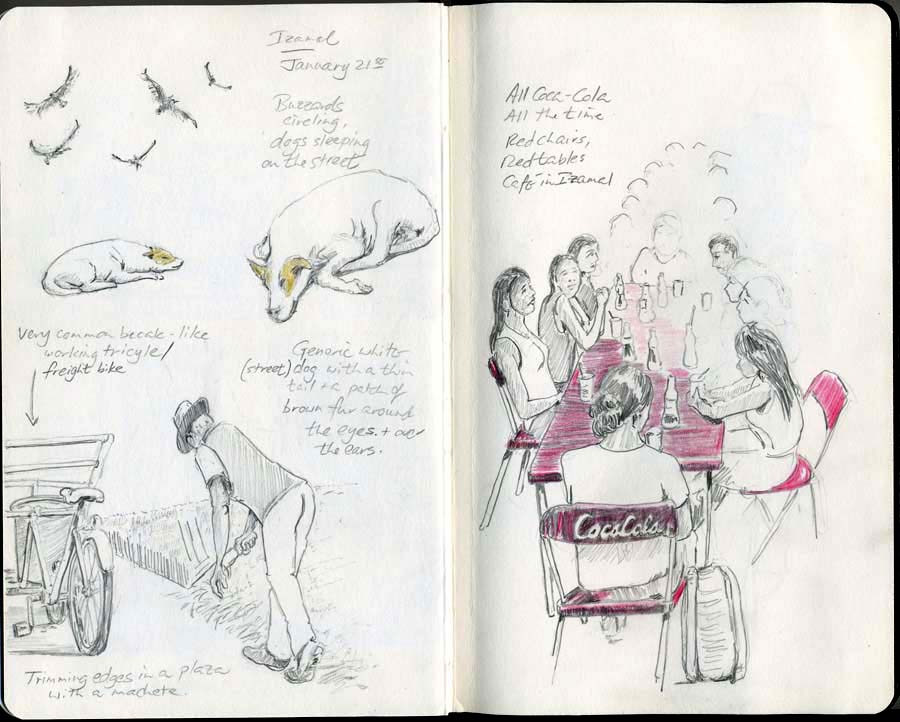
On another day, we took the bus to Izamal about an hour+ from Mérida. People hanging out and not a huge amount to see except for the large convent and a small Mayan ruin nearby.
Drew the dogs and the buzzards and watched a man expertly edging a lawn with a razor-sharp machete...
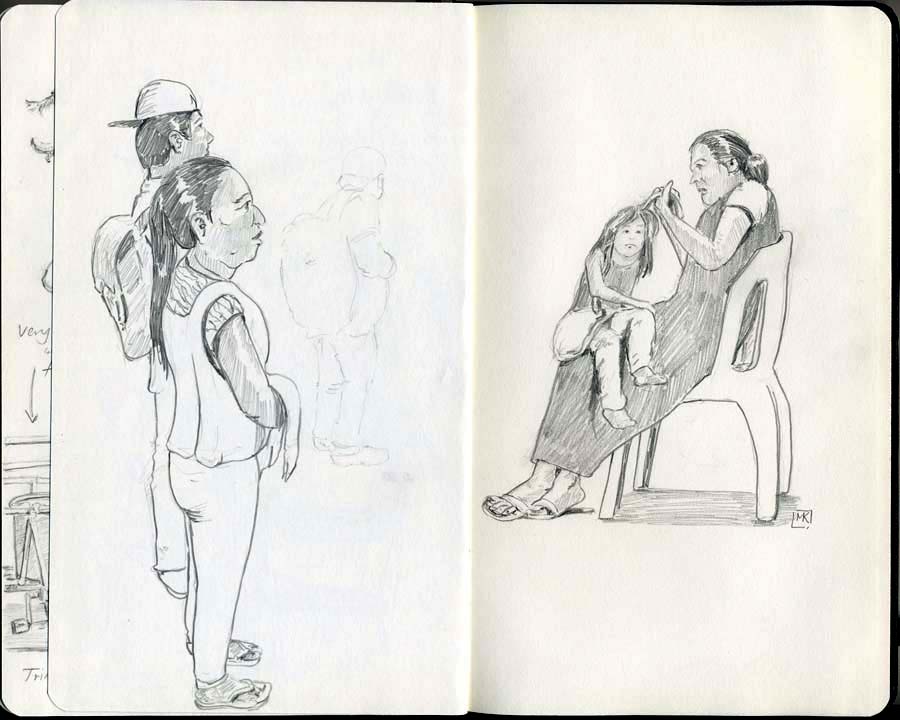
The woman on the left has a classic Mexican-Indian head. Most people are quite short (5' or so), sturdy and fit, with dark skins and black hair.
As with everywhere in Mexico, the children seem to be independent but deeply loved and contented; family life appears strong and traditional compared with the rest of North America.
I hope they build the wall to keep the Americans out.
And some photos with the aged Samsung cellphone ...
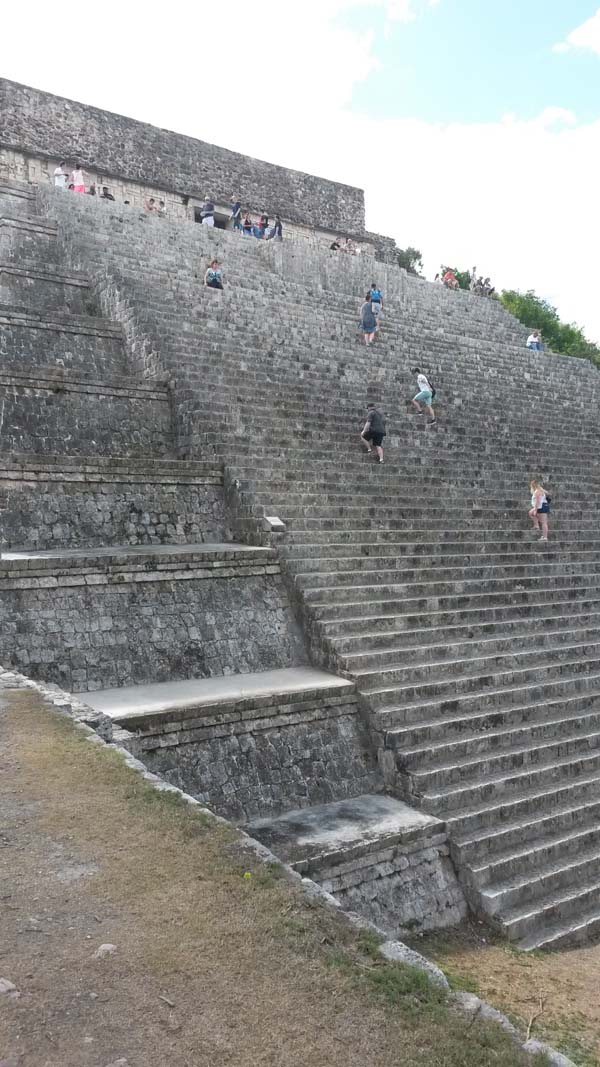
Climbing and descending the Gran Pirámide; dangerous and very hard on the knees and thighs!
The other, larger "soothsayer's pyramid" (Pirámide del Adivino) is off-limits.
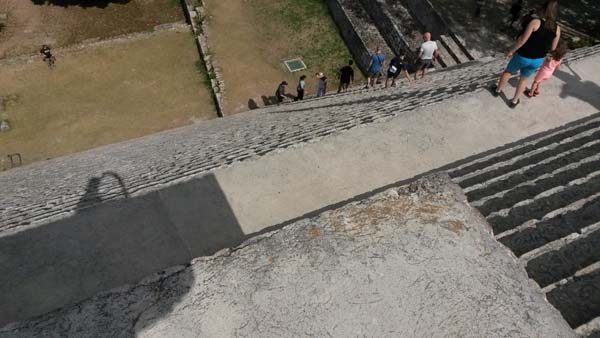
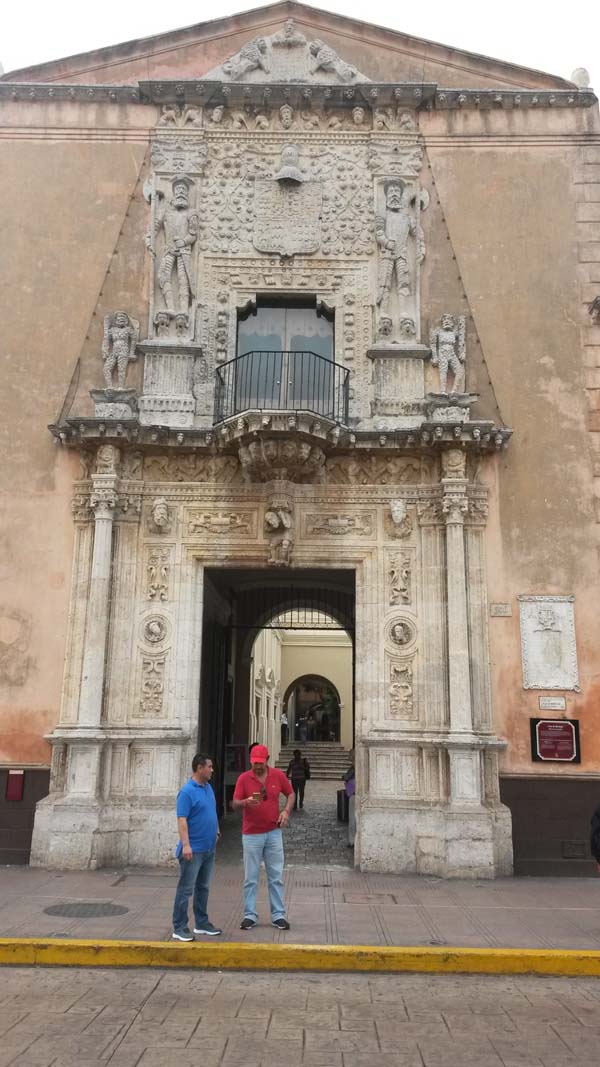
The entry to a museum on the Plaza Grande. Note the conquistadors standing on screaming Mayan heads.
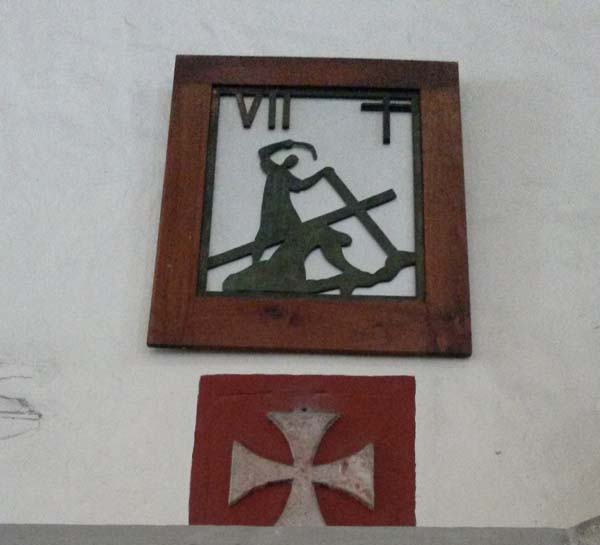
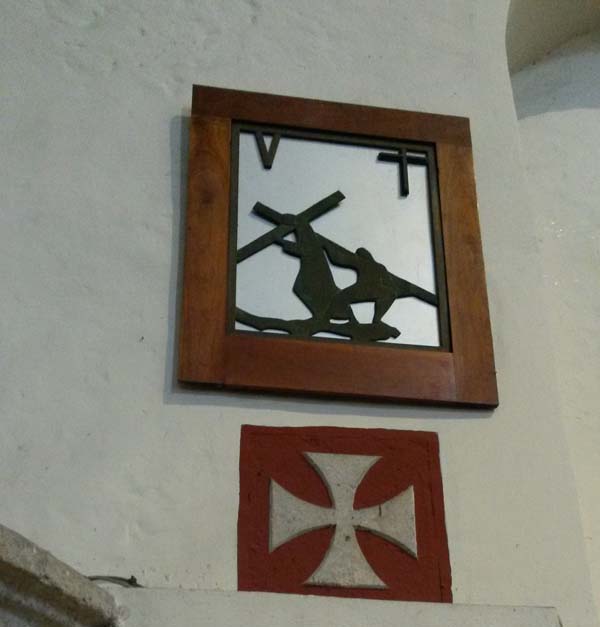
The best "stations of the cross" I've ever seen, in the cathedral on Plaza Grande in Mérida, with curious "Iron Cross"
motifs below them. The cathedral, we were told, is the oldest and largest in the New World.
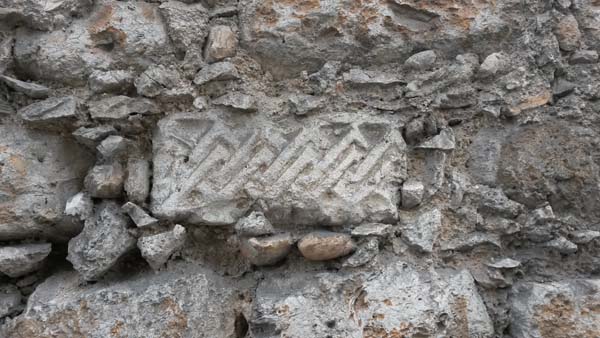
We learned that the cathedrals were built with stones from demolished Mayan temples on the site of Mérida, using their limestone bases.
A few stones with their Mayan decoration intact and facing outward were placed in the walls of the cathedral and nearby churches,
probably by whip-driven Mayan workers determined to keep a vestige of their cultural memory alive.
If you ever thought that the Spanish colonies were tolerable places, a visit to the Yucatan will disabuse you of that notion.
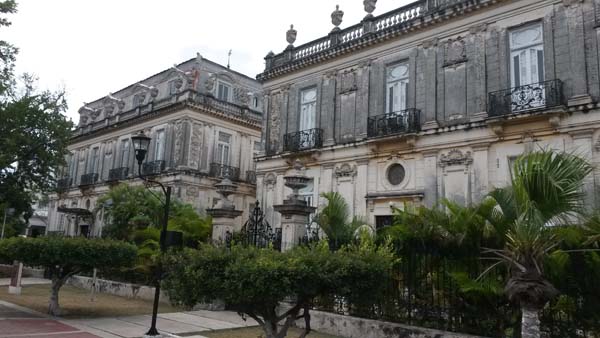
Colonial wealth on Mérida's "Champs Elysées" – the Paseo de Montejo, a half-hour walk north of the Plaza Grande.
The source of the wealth? Sisal, which is the fibre of a yucca that was grown to meet the booming demand for ropes and nets c. 1900.
It was plantation work done by Mayan-Mexicans working under appalling conditions. It is interesting to see that
the government buildings in Mérida are now bilingual Spanish and Mayan, part of the reconciliation for Mexico's past.
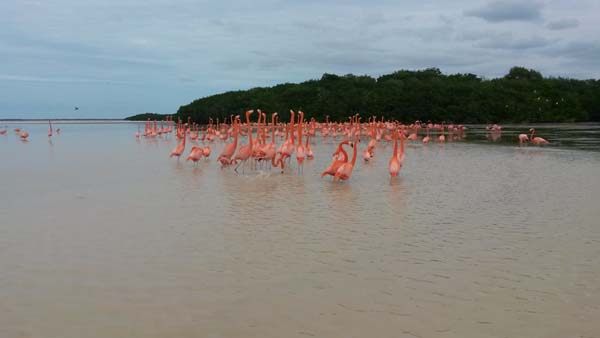
And, the flamingos at Celestun, as close as I could get them with the cell-phone camera.
Contact me Go to home page Return to main travel page